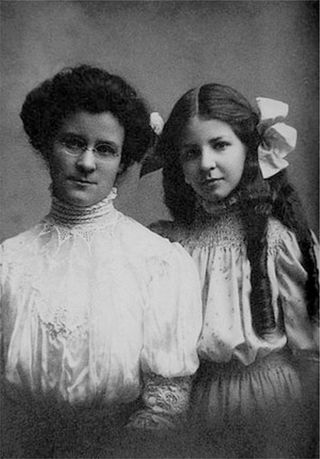Myers-Briggs
In Defense of the Myers-Briggs
A comprehensive counter to anti-MBTI hype.
Posted February 12, 2020 Reviewed by Chloe Williams
The next time someone tells you that the Myers-Briggs is debunked, ask them for a citation. The truth is that the Myers-Briggs Type Indicator (MBTI) is no less valid or reliable than other personality tests. Nonetheless, rumors persist that the test is wholly unreliable and is not based on research.
Unfortunately, the propagation of such falsehoods is particularly rampant among my fellow academics. As a personality researcher, whose work focuses on Jungian type theory (the foundation on the MBTI), I have encountered my fair share of skepticism and good-tempered ribbing from other researchers. One of my colleagues (an INTJ) pokes his head into my office at least once a week to ask me how my “astrology research” is going. Of course, I have to forgive him, since it is in an INTJ’s nature to be dubious.
It has been difficult to locate where or how skepticism around the MBTI began. One article I often see cited as rendering the test “totally meaningless” is a 2005 article by David Pittenger in Consulting Psychology, titled “Cautionary Comments Regarding the Myers-Briggs Type Indicator.” The article’s stated focus is on evaluating the MBTI’s usefulness in corporate settings. In his abstract, Pittenger writes: “The present article evaluates several of the psychometric limitations and criticism of the MBTI that warrant considerable caution…” Although, by my reading, the article offers scant evidence to merit such a pandemic level of caution.
The article begins by retreading unresolved disputes over forced-choice psychometrics and type versus trait personality theory. However, most of Pittenger’s argument hinges on reports of (so-called) “poor” test-retest reliability in past MBTI research. He cites four studies that “suggest that the reliability of the MBTI does not meet expectations derived from its theory." All four studies were completed between 1962 and 1979. Pittenger only includes data from the most recent report by Howes and Carskadon (1979).
He summarized part of their results: “when the initial score was within the intermediate range, 32% of the EI, 25% of the SN, 29% of the TF, and 30% of the JP labels shifted on the second testing” (emphasis added). In other words, if individuals scored close to the midpoint between two types (extravert and introvert, e.g.) on their first testing, they were still less likely to test as a different type and more likely (68 to 75%) to test as the same type one month later. Pittenger does not report the retest reliability of those that initially scored at the moderate or extreme ends of each type, which one might expect to be even more consistent.
To his credit, Pittenger does cite more recent research (Salter, Evans, & Forney, 1997) and a meta-analysis (Capraro & Capraro, 2002) that have found that the MBTI does indeed have strong test-retest reliability. In the end, Pittenger concedes that “conclusions regarding the superiority of either the MBTI or other instruments are, at present, premature."
But criticism of the MBTI did not begin in 2005. When the test was first published in 1943, and despite years of research and testing by Isabel Myers and her mother Katherine Briggs, their work was rejected out-of-hand by an academic community that was unwilling to take seriously the work of two women without graduate degrees. In the opening to Meyers’ book, Gifts Differing, her son, Peter Myers, describes the opposition that the MBTI faced at its inception; he writes “when, in 1943, they [Myers and Briggs] produced the first set of questions destined to become the MBTI, they came face-to-face with a double-barreled opposition from the academic community. In the first place, neither was a psychologist, neither had an advanced degree… and the academic community had little use… for a self-report questionnaire purporting to identify Jungian type created by two unknown women who were ‘obviously totally unqualified’” (Myers, 1980).
Was it this initial bias that forever tainted the Myers-Briggs in the eyes of academics?

Keep in mind that while Myers didn’t have an advanced degree (a rarity for any woman in the 1940s, to be sure), she had been mentored by Edward N. Hay in test construction, scoring, validation, and statistics. She went on to conduct research at the University of Pennsylvania, Cal Tech, and other institutions to refine the Indicator. In 1962, when the first MBTI manual was published, the Indicator was backed by the Educational Testing Service and had the support of Donald MacKinnon, head of the Institute of Personality and Social Research at UC-Berkley; Harold Grant, professor at Michigan State and Auburn universities; and Mary McCaulley at the University of Florida, among others. Myers spent the next 20 years deepening her understanding of the effects of type on the lives of people and refining the Type Indicator through quantitative and qualitative study.
The research that Myers and her colleagues conducted in those early years was primarily interested in what kind of profession was best suited to each type. Indeed, one of the main goals in developing the MBTI was to help 1940s to 50s women, many of whom had never had a career, find satisfactory employment during the Second World War.
A common misunderstanding of the MBTI is that it predicts job performance. It does not. However, personality type does seem to have a significant association with school and career preference and satisfaction. From myersbriggs.org: “Personality type is a practical tool for… recognizing work that satisfies your preferences. Knowing your MBTI type may, for example, prove helpful in deciding what specific areas of law, medicine, education, or business a person prefers” (/personality-and-careers).
As early as the 1960s, Myers had begun to identify which types were more likely to go on to college, be awarded merit scholarships, and have certain careers or college majors. For example, some of the early research by Myers and her colleagues noted that law students were more than three times (3x) more likely to be Thinking (T) types than Feeling (F) types; police officers were nearly four times (4x) more likely to be Sensing (S) types than iNtuitive (N) types; school administrators were more than six times (6x) more likely to be Judging (J) types than Perceiving (P) types; and Rhodes Scholars were more than thirteen times (13x) more likely to be iNtuitive (N) types than Sensing (S) types. These are just a few examples of findings from the first 20 years of research by Myers and others.
In 1975 Myers (along with clinical psychologist and University of Florida professor Mary McCaulley) founded the Center for Application of Psychological Type (CAPT). CAPT’s mission is stated as “Fostering human understanding through, training, publishing, and research.” They support research and teaching on Jungian type theory (including the MBTI) through conferences, training, and scholarships. In 1977, CAPT began publishing the Journal of Psychological Type, which, to date, has published over five-hundred articles related to type theory. Isabel Myers was clearly and demonstrably a woman who valued research and used it to develop and refine the MBTI.
Research on the accuracy of the test itself, updated versions of the test, and research on type associations has continued even after Myers’ death in 1980. Since 1943, the MBTI has been updated several times for methodological improvements and ease of use. The online version of the MBTI was updated as recently as 2019. The MBTI has also been successfully adapted and translated into versions for global audiences and non-English speakers. These versions also report good reliability, validity, and factor structure for their given populations.
Other researchers also continue to use type tests and theory in their work. For example, Dario Nardi’s research at UCLA suggests that there may be a neurological basis for type. His work suggests that individuals have preferred neural networks that form the basis of their cognitive, emotional, and behavioral patterns, which distinguishes their personality type. My own research with graduate student Dakota Jackson has found evidence of associations between type and self-efficacy, attachment style, and some clinical symptomologies. Some artificial intelligence researchers are even looking to type theory as the basis for artificial personality styles (Meerbeek, 2016; Neubauer, 2003).
The culmination of these (and hundreds of other) published studies presents a robust defense against claims the MBTI and other type tests are invalid or unreliable. In my view, this puts the Indicator on par with the well-respected Big Five. But what sets the MBTI apart is its foundation in psychological theory and clinical practice.
Carl Jung used his clinical observations and unquestioned brilliance to conceive of eight types (today referred to as “cognitive functions”). Jung published his type theory in Psychological Types – first translated into English in 1923. It was from this book and Jung’s theory that Katherine Briggs formed and Isabel Myers’ refined their Type Indicator. Scientific-best-practice puts theory ahead of testing; because data obtained without an established theoretical framework is easily interpreted with bias. Eyesnck (1992) had this to say about the Big Five’s lack of a theoretical basis: “I am suggesting that in the absence of a nomological network, and lacking any theoretical underpinning, the [Big Five] interpretation is subjective, contestable, and hence unscientific." This is not a criticism that can be levied against the MBTI given its deep theoretical roots.
Lastly, I think it’s important to recognize the widespread use and popularity of Myers-Briggs-like tests, and the connection that people have with their type. This is not an entirely scientific argument, to be sure, but I would suggest that any test claiming to describe a person’s personality should be recognizable to that person or anyone else who knows them well enough. This is the experience that many people have when they finally come upon their type. They recognize themselves – the good and the bad parts. And there’s some validity in that too.
References
Pittenger, D. (2005). Cautionary comments regarding the Myers-Briggs Type Indicator. Consulting Psychology Journal Practice and Research, 57(3): 210-221. DOI: 10.1037/1065-9293.57.3.210
Eysenck, H.J. (1992). Four ways five factors are not basic. Personality and Individual Differences. 13 (8): 667–673. doi:10.1016/0191-8869(92)90237-j.




